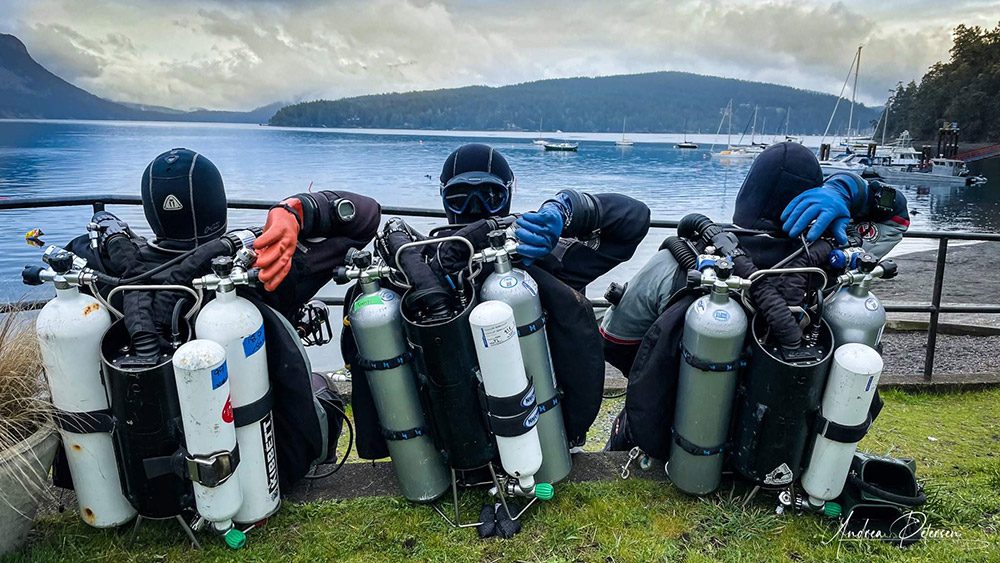

Equipment
Back to The Future of Open Circuit
This month we continue our discussion of the migration to closed circuit rebreathers (CCR) and the future of open circuit (OC) scuba for tech diving. Instructor trainer Richard Taylor argues that rumors of open circuit demise are greatly exaggerated, while Instructor Evaluator Guy Shockey dives into economics of CCR vs OC. In addition we offer readers a bit of “diving discipline,” along with FREE downloads of aquaCORPS’ C2 and BENT issues.
By Michael Menduno. Header image by SJ Alice Bennett
🎶🎶 Pre-dive Clicklist: Back in Time by Huey Lewis & The News
Seen from vantage point of hindsight, the ultimate goal of the so-called “Technical Diving Revolution” that emerged in the sport diving community in late 1980s and early 90s, was arguably the adoption of closed circuit rebreathers (CCR) as the platform of choice for extended-range technical diving. The migration has been a long time in coming.
It took nearly a decade for the dive community to accept and adopt mix gas diving, including trimix and nitrox blends for open circuit scuba, and in the process, build the necessary mixed gas infrastructure. Today, of course, most dive centers offer nitrox, while more specialized centers also offer helium mixes, oxygen, and even argon for suit inflation—all necessary infrastructure to support the advent of mixed gas rebreathers.
Similarly, it has taken a little more than two decades since the introduction of the first closed circuit rebreathers (CCR) in the late 1990s—Thank you AP Diving and KISS (now under the XDeep brand)—to develop reliable and robust equipment, training, and necessary safety protocols and practices which take into account the fallibility of the human diver, to make rebreather diving viable from a safety perspective.
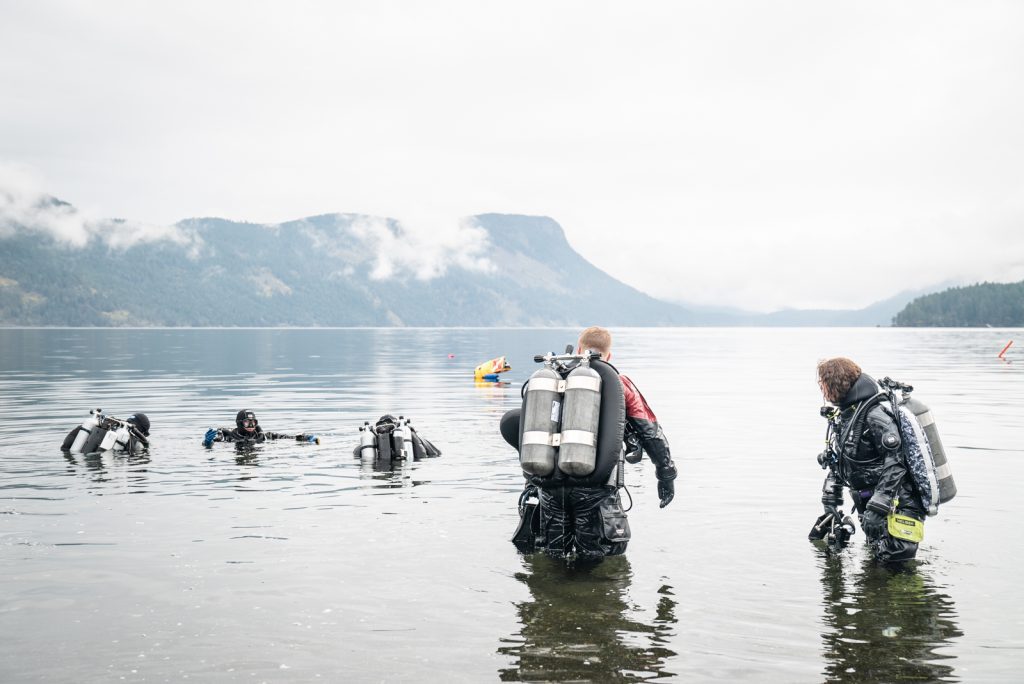
Today, of course, with more than 25 rebreather vendors on the market and a plethora of training options—nearly all scuba training agencies offer CCR courses—rebreathers are clearly the platform of choice for deep and/or long tech dives, despite the increased investment and maintenance required when compared to open circuit scuba.
What’s more, the promise of reliable bailout rebreathers—a concept first introduced by Bill Stone at his Wakulla Springs Project 1987, and soon followed by French cave explorer Olivier Isler in the mid-1990s—is now slowly becoming a reality, with vendors like Divesoft, Halcyon and XDeep are offering specialized bailout rebreathers.
Interestingly, despite predictions to the contrary over the last quarter of a century, the so-called “Type R” recreational rebreathers—for the most part semi-closed rebreathers—have yet to gain any appreciable traction among consumers. “Reccies,” if you will, have clearly opted for the ease of operation and the forgiving nature of open circuit scuba versus getting in the loop, at least for the moment. Conversely, semi-closed units are of considerable interest to military divers.
So what’s to become of open circuit (OC) tech diving?
In this issue of InDEPTH, we continue our discussion of the role and future of open circuit, as an increasing number of tech divers opt to go CCR. First, TDI instructor trainer and tech pioneer Richard Taylor argues that OC Tech is Not Dead and remains an essential skill that should be mandatory for CCR divers. Next, Global Underwater Explorers (GUE) instructor and Instructor Examiner Guy Shockey takes a deep dive into the economics of closed vs open circuit diving. Break out your digital wallet and dive as deep as you can afford.
Rebreathers clearly require “diving discipline” and we offer this satirical look at the rush to rebreathers back in the early tech days, circa JAN 1995, compliments of aquaCORPS Journal archives. WARNING: The issue was banned at the US Navy Experimental Diving Unit.
We also offer a FREE DOWNLOADs of aquaCORPS #7 C2 rebreather issue, JAN 1994, and aquaCORPS #5 BENT, JAN 1993
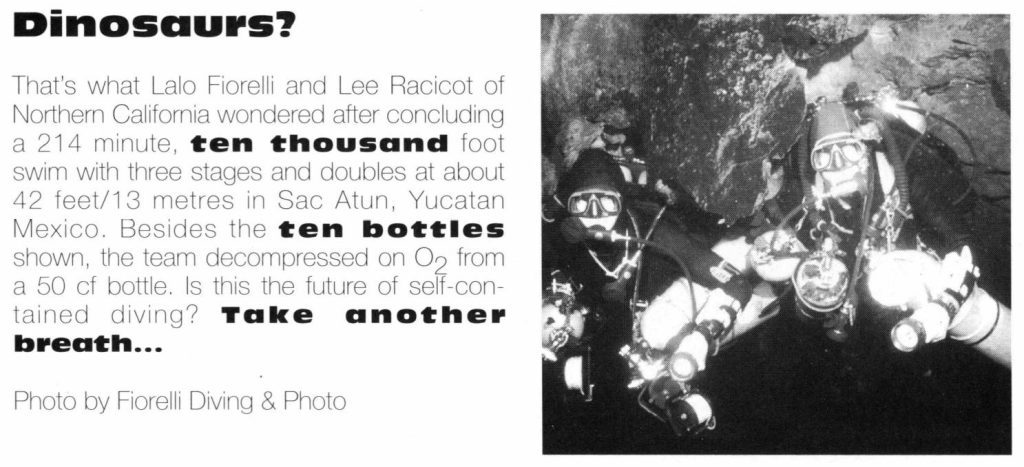
Of course, there are links to last month’s lead story, “Will Open Circuit Tech Diving Go the Way of the Dinosaurs,” by Neal Pollock, along with a report from InDEPTH’s managing editor Ashley Stewart, “GUE and The Future of Open Circuit Tech Diving,” in case you missed them.
Please don’t forget to answer our short OC v CCR survey on your way through, and be sure to mind those PO2s. You are wearing your Mask Retaining Strap (MRS) aren’t you?—Michael Menduno/M2
Open Circuit Technical Diving Is Not Dead
by Richard Taylor

The Economics Of Choosing CCR Vs OC
by Guy Shockey

To Be, or Not to Be a CCR Diver: How I made the Choice
InDEPTH asked new technical or CCR divers to tell us how they went about making the decision as to when and why to make the switch from open circuit. Here’s what they told us: To Be, Or Not To Be

Diving Discipline
There was a big push by some training agencies in the early days of tech diving to promote rebreather certifications, whether or not the user was qualified or even owned a rebreather. At aquaCORPS, we decided to address the situation with a bit of artistic license in a feature called, “Diving Discipline,” which ran in aquaCORPS #9 WRECKERS (1995). As a result of the spread, the issue was banned at the US Navy Experimental Diving Unit (NEDU). Sales went through the roof, uhh, of the habitat.—M2
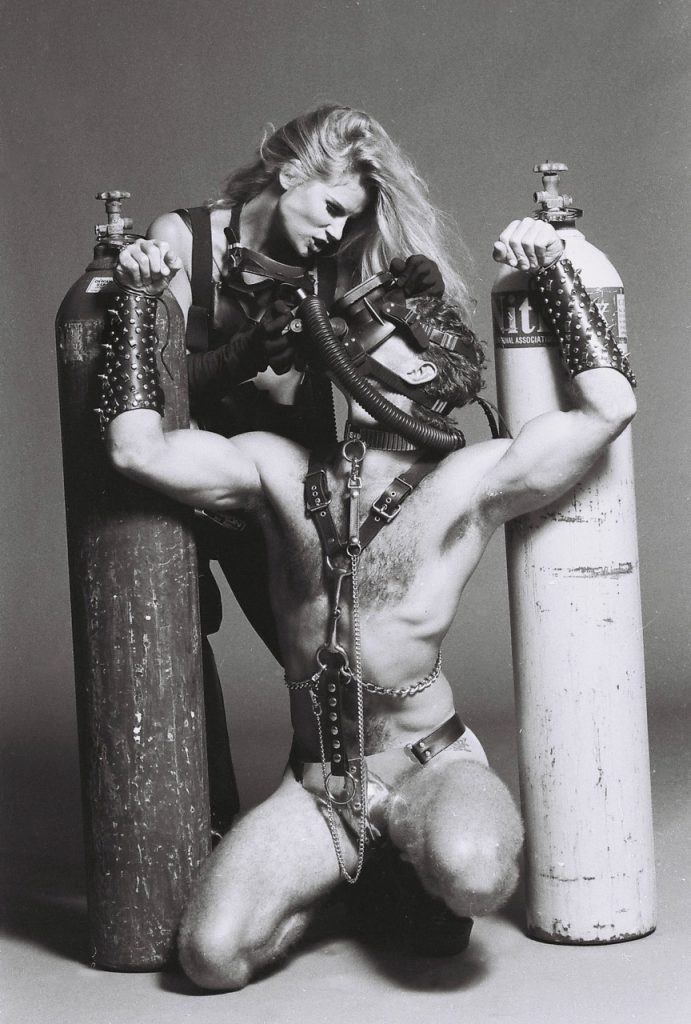
Free Download
aquaCORPS #7 C2
aquaCORPS #7 C2 (Closed Circuit) was published in January 1994 just prior to the 1994 tek.Conference and DEMA show held in New Orleans, LA. The issue focused on rebreather technology, and we planned it as a primer in anticipation of aquaCORPS Rebreather Forum, scheduled to be held in Key West, FL that coming May. At the time, there was only a few dozen rebreather in the hands of sport divers.
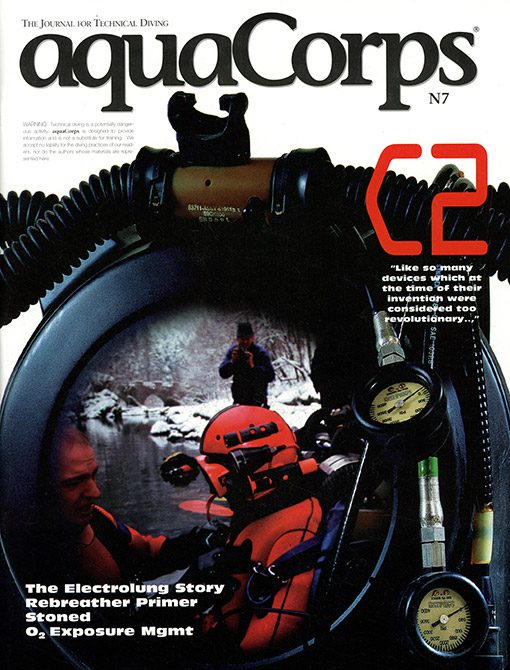
Free Download
aquaCORPS #5 BENT
aquaCORPS #5 BENT was published in January 1993 in conjunction with the first technical diving conference, tek.93, held just before the annual DEMA show in Orlando, Florida. The issue focused on decompression illness (DCI) and presented the latest thinking on the theory, classification, treatment, and human factors associated with DCI. At the time, DCI could easily be characterized as the “sexually transmitted disease (STD)” of sport diving. Like STDs, the affliction struck divers engaged in an activity that was fundamental to their nature. What’s more there was a disproportionate fear and stigma surrounding DCI suggestive of a “moral disease,” and a surprising lack of understanding regarding the disorder on the part of divers and the industry as a whole.

Will Open Circuit Tech Diving Go the Way of the Dinosaurs?
by Neal Pollock Ph.D.
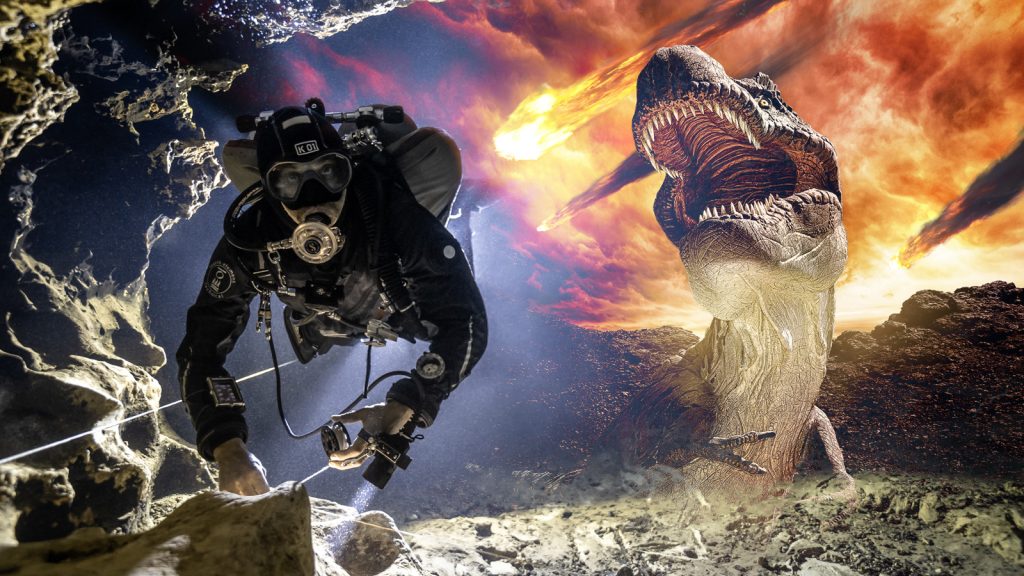
GUE and The Future of Open Circuit Tech Diving
by Ashley Stewart
